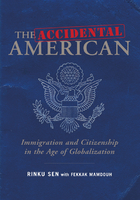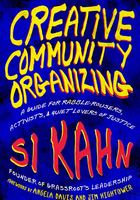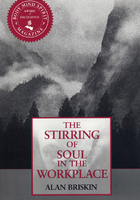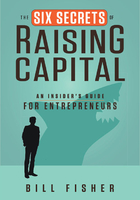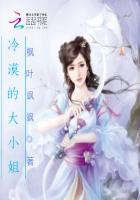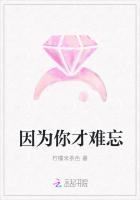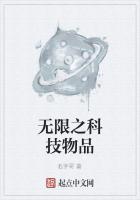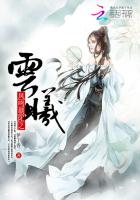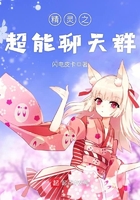The Elements of Artistic Flow
In Stephen Sondheim's song “Anyone Can Whistle,” the singer wonders why she can do difficult things like tango and read Greek but can't whistle, why “what's hard is simple, what's natural comes hard.” Like the tango and Greek, economics is hard, but after years in business the economic flow seems relatively clear and simple to most of us. Artistic flow, on the other hand, even though it includes natural things like emotions, imagination, beauty, and meaning, comes hard to people in the business world.
Moving from inputs to outputs is not the only type of flow. Psychologist Mihaly Csikszentmihalyi described flow as “a sense of exhilaration, a deep sense of enjoyment that is long cherished and that becomes a landmark in memory for what life should be like.”[1] We are engaged, confronting challenges we have the resources to meet, fulfilling our desires, mastering our own fate. A basketball player is “in the zone” when he is playing at the top of his game and everything he does has a kind of magic. Flow is the sense we get when doing something hard feels simple, when we feel in control of our actions.
Likewise, good companies can experience this state of well-being. These are the companies that are better at drawing on both artistic and economic elements. For most companies and most people, this is not easy. They're not used to seeing the artistic resources, desires, and processes around them. They either overlook artistic elements or undervalue what they see.
Our point in this chapter is to give you a framework for the elements of economic and artistic flow—the inputs, outputs, and processes familiar to both worlds. We'll see that they are already familiar to us, and that it's not such a big step to use them more consciously. Then, what had seemed hard—artistic sensibility improving economic performance—will become simple, and what's natural won't seem so hard.
Artistic Inputs in Business
Land, labor, and capital are the classical factors of production, the inputs or resources of any economic flow. Make good use of them, and they can give you a comparative advantage over other firms working with them. But when everyone is working with those same inputs, the differences are likely to be small and short-lived. Add a different variety of resources to the flow, however, and the comparative advantage can be large and long-lasting. Artistic inputs, of course, are a definite source for that variety. When economic orthodoxy requires us to see artistic inputs only as variations on different kinds of labor, it narrows our understanding of the breadth of resources actually available to us.
Imagination is an artistic resource that can transform the dreary economic resource of labor into something more positive. While dreamers and small children have lots of imagination, managers generally show considerably less. Even though the arts treat imagination as fundamental, it seems out of place in the economic model. Business surely recognizes the benefits of imagination but doesn't know how to treat it so that it naturally contributes. Imagination is natural, but it comes hard to business.
It doesn't have to be that way. When Julie Taymor was invited to create the staged version of Disney's The Lion King, she faced a daunting challenge: to be simultaneously magical and commercial. How do you take cute cartoon characters and have them seem believable on stage? How do you keep it from looking like a sorry version of Disney on Ice? Taymor's imaginative leap was to create exquisitely fantastical puppets twice the size of people, magical yet plausible lions and giraffes, meerkats and warthogs. Pixar Studios created similar commercial magic for Disney with its advanced animation technology in films. Too bad, then, that CEO Michael Eisner couldn't bring such imaginative genius to Disney's total business flow. Instead, by the late nineties, stockholders, customers, and employees alike screamed that he was killing the magic—Disney's most important resource and value creator.
Emotion is another resource we all have, but we associate it more with artists than with executives. Artists are keenly aware of emotions, both their own and the ones they're eliciting. By contrast, when businesspeople talk about trusting their emotions, they feel compelled to dress them up in tough-guy talk. Jack Welch's book, after all, was called Jack: Straight from the Gut, not I Feel Your Pain. Emotions are powerful resources when we can make use of them, but doing so is difficult as long as emotions are associated with words like soft and weak. Schwarzenegger the politician uses emotions as effectively as Schwarzenegger the action movie star.
The most effective leaders are able to blend the rational and the emotional. Psychologist and journalist Daniel Goleman describes them as having the skill of “primal leadership.”[2] When people in an organization see the folks at the top being emotionally grounded, they are more likely to make use of their own emotional resources. The companies that show up in Fortune's Most Admired Companies list are ones where it's okay to show passion, courage, loyalty, and hope. People are proud to work at a company like Johnson & Johnson, and their emotions have as much impact as a firm's economic assets on its bottom line.
Intelligence is another very human resource. Howard Gardner, a psychology professor at Harvard's Graduate School of Education, showed that a lot more smarts exist than just book smarts. He coined the term multiple intelligences to describe the broad range of abilities that go beyond the verbal and mathematical intelligence measured on IQ and SAT tests.[3] Although he focused mainly on the implications of these multiple intelligences for new approaches in education, they are tremendously applicable in business.
Artists rely on musical, spatial, and kinesthetic intelligences. The two emotional intelligences Gardner identified as critical for success—interpersonal and intrapersonal —are as closely aligned with an artistic sensibility as with an economic one. Inter personal intelligence includes abilities like leading, nurturing relationships, keeping friends, and resolving conflicts. Gifted leaders know how to work with people. They instinctively know when somebody is starting to get upset. Intrapersonal intelligence is the ability to know what's going on with other people and to know what's going on in yourself.
Experience from one domain that can be applied elsewhere is yet another resource. Craig Venter significantly sped up completion of the human genome project because he saw that reading the human genome was less a biology problem than a computer problem. Filippo Brunelleschi is known today as the architect of Florence's magnificent Duomo, but it was his professional experience as a clock-maker that enabled him to create the machinery—the winches, cranes, and hoists—needed to construct the first great building of the Renaissance.[4] Crossover experience, like multiple intelligences, emotions, and imagination, is a resource that finds a natural home in both artistic and economic flows; as notions like crossover and duality suggest, the business world can benefit substantially by enhancing its economic models with artistic elements.
Artistic resources are found in people rather than on balance sheets, and their abundance makes them inimical to strict accounting. Economic resources, which are scarce by definition, are much easier to keep track of. In business, we know which human resources we employ and what we are paying for them. All these people have emotions, experience, imagination, and artistic intelligence. It wouldn't cost us more to tap into these underused resources, but they generally aren't lying out in plain view. We need a framework to account for artistic resources as explicitly as the “dismal science” accounts for economic ones.
Artistic Processes in Business
In between the upstream inputs and the downstream outputs, in between resources and desires lie all the processes that connect them. In business terms, they are familiar to us as R&D, manufacturing, distribution, sales, and marketing, and as corporate overhead functions like finance and human resources. Together, these processes transform resources into products and services. Raw materials get refined, parts get assembled, and products get shipped, either physically or electronically. Collectively, the processes are referred to as a value chain.
You can think of the links in the value chain as coming in various orders. A good rule is to start with the customer, so marketing might be the first step. Alternatively, the flow might begin with research and development. If your business is a restaurant like Chez Panisse that uses only fresh, locally grown produce, you might start with purchasing, since what you sell would depend on what you could find in the market that morning. In any case, the processes in the economic flow are somewhat similar. Each process takes as its inputs the outputs of the preceding process. Each process can be evaluated in terms of its efficiency—the ratio of value created to value consumed.
The artistic flow of business has its own version of the value chain, in which the processes are create image produce image connect.
Create, the first of the three processes, is where the magic happens. Creating begins with a hunch, an idea, an observation. Beethoven always kept a notebook with him and was constantly jotting down musical ideas that he might want to use. Once you've got an interesting hunch, it's time to collect materials to flesh it out and to immerse yourself in them. Car companies with headquarters in Michigan, Japan, and Germany have design labs in Southern California, where new trends appear and early adopters live. If you are trying to stay ahead of other innovators, you need to immerse yourself in the environment where the early adopters live and where trends make their first appearances.
Creating something new requires leaps of imagination. After having a hunch and immersing yourself in source materials, things need time to simmer, connect, and sort themselves out. Then, with a little luck, somewhere along the way a miracle happens, that Click! moment when everything falls into place. “Aha! I think I'll paint a woman with no eyebrows and just a hint of a smile!”
But there's more to creating than getting the big idea. The Click! sometimes happens before any paint goes on the canvas. More often it happens well after the work has begun. Execution is not the grunt work of the creative process. Execution is where skill and experience come into play. Lots of people have creative ideas; artists have the “chops” to bring them to life.
Produce, getting work in front of audiences, is as important in the artistic flow as getting products to customers is in the economic flow. Both start with the daily work that makes great performances possible. Artists, however, practice every day, keeping in shape, making sure that their technical skills don't get sloppy over time. Business types practice too, but they rarely bring the same day-in-day-out discipline to it.
In a performance all the parts come together, and the piece is ready to be judged by its audience, or the offer by its customers. People are “performing” in the sense that they are delivering the best possible rendering of the work. Jan Carlzon, when he was the CEO of Scandinavian Airlines System almost two decades ago, completely turned around the company's fortunes by focusing on what he called “moments of truth,” those 50,000 times a day when a customer interacted directly with someone from the airline. Pilots, flight attendants, baggage handlers, and sales agents came to see that moments in their jobs called for a great performance.
Connect, the third artistic process, involves the audience as much as the artist, the customer as much as the creator and producer. In fact, when art touches audience members, they become artists themselves. The audience's work in creating art goes beyond encountering a piece and responding to it. It also includes sharing that experience with other people. In doing so, the audience is not only marketing the work, it is contributing to its creation.
Encountering art isn't passive. Our response can take the form of laughter, applause, or, at the art museum, respectful murmurs. Applause and other outbursts communicate an audience's appreciation to performers and allow people to express their emotions. At the great Kabuki Theater in Tokyo, the audience has its favorite characters and calls out its advice and emotional reactions to the highly stylized and scripted situations. It's startling to see and hear the normally reserved Japanese spectators shouting out the equivalent of “Kill the bum” in the midst of the action on stage. It shows how engaging the art form is.
Success, so the saying goes, has many fathers, while failure is an orphan. When consumers start telling their friends what they made of a performance, they are really explaining how it touched them, how it became part of their lives. In business, it is said that the customers own a brand, because they decide what it means to them. In art, the audience “owns” the artwork, as long as it was good enough to truly touch them.
Although economic and artistic processes have similarities and overlaps—both take raw materials and then transform and deliver them—the two also differ significantly. Economic processes are large scale and collective; artistic processes are as often as not personal. Economic processes are judged by how efficiently they operate; artistic processes are judged by the quality of the product. Making both business and art work is a matter of creating value, performing effectively, and connecting with the customer. Economic and artistic flows are different ways of fulfilling the audience's desires.
Artistic Outputs in Business
Downstream, at the end of each flow, are the outputs, what business delivers to its customers to fulfill their desires and provide a satisfying customer experience. Customers have economic desires in mind when they evaluate different offers in terms of what is better, faster, cheaper, and safer.
Better is when James Dyson, the British inventor, built a better (i.e., bagless) vacuum cleaner that sucks up half a billion dollars a year in worldwide sales. Faster is when Moore's Law makes computing and connecting ever faster, creating expectations that every business will work more quickly, too. Cheaper is when outsourcing a call center to Bangalore lowers costs. Safer is when buyers pay a premium for Ralph Lauren clothing that reduces the chance of product flaw and aesthetic mishap.
While our economic desires emphasize effectiveness and efficiency, our artistic desires emphasize emotional and aesthetic needs. The natural consequence is that different values rise to the fore. Again and again, we run into qualities we look for in art that can also enrich business.
Beauty is generally the first thing people look for in art. It elicits admiration and delight for itself, without any consideration of its usefulness. Imagine how much more wonderful something beautiful is when it also serves its purpose perfectly. Apple's iPod is beautiful to look at, and, even more important, its software and user interface are beautiful to use. The beauty lies in the product itself and in the effect it produces. In its July 26, 2004, cover story, Newsweek gushed, “iPod, Therefore iAm.” Finding and recognizing beauty is important in all sorts of work. The ballplayer makes a beautiful catch, the mathematician admires a beautiful equation, the retailer pines for a beautiful selling season, and a parent praises a child for a beautiful report card.
Excitement is often the inverse of beauty. A piece of art can be compelling without being beautiful in a conventional sense. Great tragedies and good horror movies are engrossing because of the physiological sense of relief we get when they're over. The raucous percussion of Stravinsky's Rite of Spring touched off a riot at its premiere in 1913, and ninety years later it still stirs up an aesthetic connection with the listener. Excitement is an emotional need and an aesthetic quality. Even a commodity item like salt can have the spice of excitement. In David's kitchen cabinet you'll find several different types of salt: not just Morton's (“When it rains, it pours”), but also Diamond kosher salt and two different sea salts, Maldon flakes from England and Fleur de Mer crystals from Brittany. The gourmet salts sell for ten to twenty times the price of the unexciting commodity.
Enjoyment is a brighter and lighter aesthetic quality. It is more an art form than an economic form. Whenever we take pleasure or satisfaction in an experience or possession, we're expressing an aesthetic value. Watching an old episode of The Honeymooners is an aesthetic experience, if only because it's so funny. Enjoying a good meal, a pleasant conversation, a terrific bargain, or a huge advantage can have an aesthetic profile. “Living well is the best revenge” has its own ironic aesthetic. When was the last time you enjoyed a plane ride, a doctor's office visit, or calling the phone company with a service question? Businesses that pay attention to providing enjoyment to their customers add value to their basic offer. It's a shame that so many businesses, and even entire industries, consider enjoyment irrelevant. Imagine the competitive advantage for the one company in each field that gives this even the slightest nod. The pleasant surprise could counteract a multitude of sins.
Meaning is another quality with an aesthetic about it. Meaning comes from the psychological significance attached to something more than from the thing itself. The two strangers had a meaningful encounter, the adversaries had a meaningful negotiation, and the executive had a meaningful job. Dr. Viktor Frankl survived three years in Nazi concentration camps and wrote in Man's Search for Meaning how people experienced their imprisonment and torture. Those who managed the best were able to find meaning in even the most horrible circumstances. “The striving to find a meaning in one's life,” wrote Frankl, “is the primary motivational force in man.”[5] In his business books, like The Pursuit of WOW!, Tom Peters has written about how, why, and when work is ennobling and meaningful.[6]
Artistic desires abound, but right now we'll add just one to the list. Balance is another aesthetic impulse we look for in what we buy and how we work. Too much of any good thing ruins the aesthetic. Finding the balance in a duality comes not so much from seeking the middle road or splitting the difference as from embracing a duality's contrasts and complementarities. Brooks Brothers' program for mass customization, called “digital tailoring,” is an example of pursuing universal satisfaction by personalizing the experience. The clothing is simultaneously made-to-measure and mass produced, balancing customization and cost control.
When customers look for solutions to their needs, they express artistic desires and economic desires. When we see how fundamental and widely held artistic desires are, it becomes clear that they can connect creators and customers in new, richer ways.
The Duality of the Two Flows
To most of us, the economic flow is more familiar than the artistic flow. Yet, emotions and imagination are as real as labor and capital, creating and connecting are as real as manufacture and sales, and beauty and meaning are as real as fast and cheap. So why do we have such difficulty embracing artistic elements and integrating them into a richer, blended flow?
One reason is that economic flow is relatively easy to quantify, while artistic flow is qualitative. Where the former is more objective, the latter is more subjective. Desires in the artistic flow, for instance, describe what we are looking for in our lives as a whole and not just in a piece of art. We don't want our lives to be faster or cheaper, but we do want them to be more meaningful. Marketing and sales people become more effective when they expand their vocabulary and sensibility to speak to artistic elements as well as economic ones.
When people focus too much on quantifiable inputs, outputs, and processes because they are easier to make sense of, they can lose sight of their real goals, such as quality. Seeing only the economic flow, managers think of quality in terms of a low error rate. Total quality management means zero defects. Six sigma, the holy grail of the quality movement, means no more defects than one part per million. The work that W. Edward Deming began in postwar Japan came to its logical conclusion with Ray Kroc at McDonald's: every Big Mac today is just as good as every other Big Mac.
The pursuit of artistic quality is completely different. Accuracy in the arts is a means to an end. Why else do musicians practice their scales, and dancers their steps? But on the other hand, a flawless performance is by no means perfect. Take the first of the Bach Two-Part Inventions, for example. Note after note flows into a stream of sixteenth notes, with a few trills and a couple of longer notes. The more accurately you can play it, the better it is. Right? Wrong.
For under a hundred dollars, you can get software for your computer that will play the music flawlessly. Each note is just like the others. Each crescendo starts equally soft and grows equally loud. And the results, as the novelist Colette put it, sound like sewing machine music.[7] In other words, mechanical and soulless, perfect but not very good.
Robert Pirsig's classic road novel, Zen and the Art of Motorcycle Maintenance, tells the story of a man's search for quality and truth.[8] He sees that truth can be proven logically using a Socratic dialectic. Quality, he comes to understand, can never be proved, only recognized and worked toward. After about three hundred pages, he decides you can't have both truth and quality; they really are a dichotomy. Then he accuses the great Western thinkers of taking the easy way out: they focus on what they can prove, but they are afraid of quality.
Too many people in business are just as afraid of quality. They pursue what's safe and predictable, as in faster, cheaper, and more reliable. Business wants to make the thing right; art wants to make the right thing. That's why business is efficient, and art is effective. But business folk love to say “We've got to be more effective and efficient”—salt and pepper terms that are seldom seen one without the other—providing strong evidence that artistic and economic approaches can and should go together.
Artistic quality is not so much about predictability as it is about rightness—the chord that haunts, the phrase that thrills, the movement that enchants, and the scene that lingers. Quality is something you work toward, something you dream of when you swing for the fences.
And it doesn't stop there. Working with the artistic flow can improve the economic flow. Using resources in the artistic flow, like artistic intelligence and experience, enables us to use economic resources more effectively. When we see work as creating—not just as doing—we rethink the value chain and our place in it, both personally and in a specific industry. Satisfying customers' artistic desires is the best way to address their long-term needs, going beyond what they're in the market for today.
Although what's natural comes hard, the two flows aren't at odds. The better we get at one, the better we will find we are at the other. In the next six chapters, we'll show you how to make the elements of artistic flow a more important part of your work and business. The point isn't to appreciate artists' work; it's to make your work something others will appreciate more.
注释:
[1]Mihaly Csikszentmihalyi, Flow: The Psychology of Optimal Experience (New York: Harper Collins Publishers, 1990).
[2]Daniel Goleman, Annie McKee, and Richard E. Boyatzis, Primal Leadership: Realizing the Power of Emotional Intelligence (Boston: Harvard Business School Press, 2002).
[3]Howard Gardner, Frames of Mind: The Theory of Multiple Intelligences (New York: Basic Books, 1983).
[4]Ross King, Brunelleschi's Dome: How a Renaissance Genius Reinvented Architecture (New York: Walker & Company, 2000).
[5]Viktor Frankl, Man's Search for Meaning: An Introduction to Logotherapy (Boston: Beacon Press, 1959), 154.
[6]Tom Peters, The Pursuit of WOW! (New York: Vintage Books USA, 1994).
[7]Jacques Duffourg, “Jean-Sébastien Bach, le Roi, danse,” found on July 3, 2002.
[8]Robert Pirsig, Zen and the Art of Motorcycle Maintenance: An Inquiry into Values (New York: William Morrow and Company, 1974).


